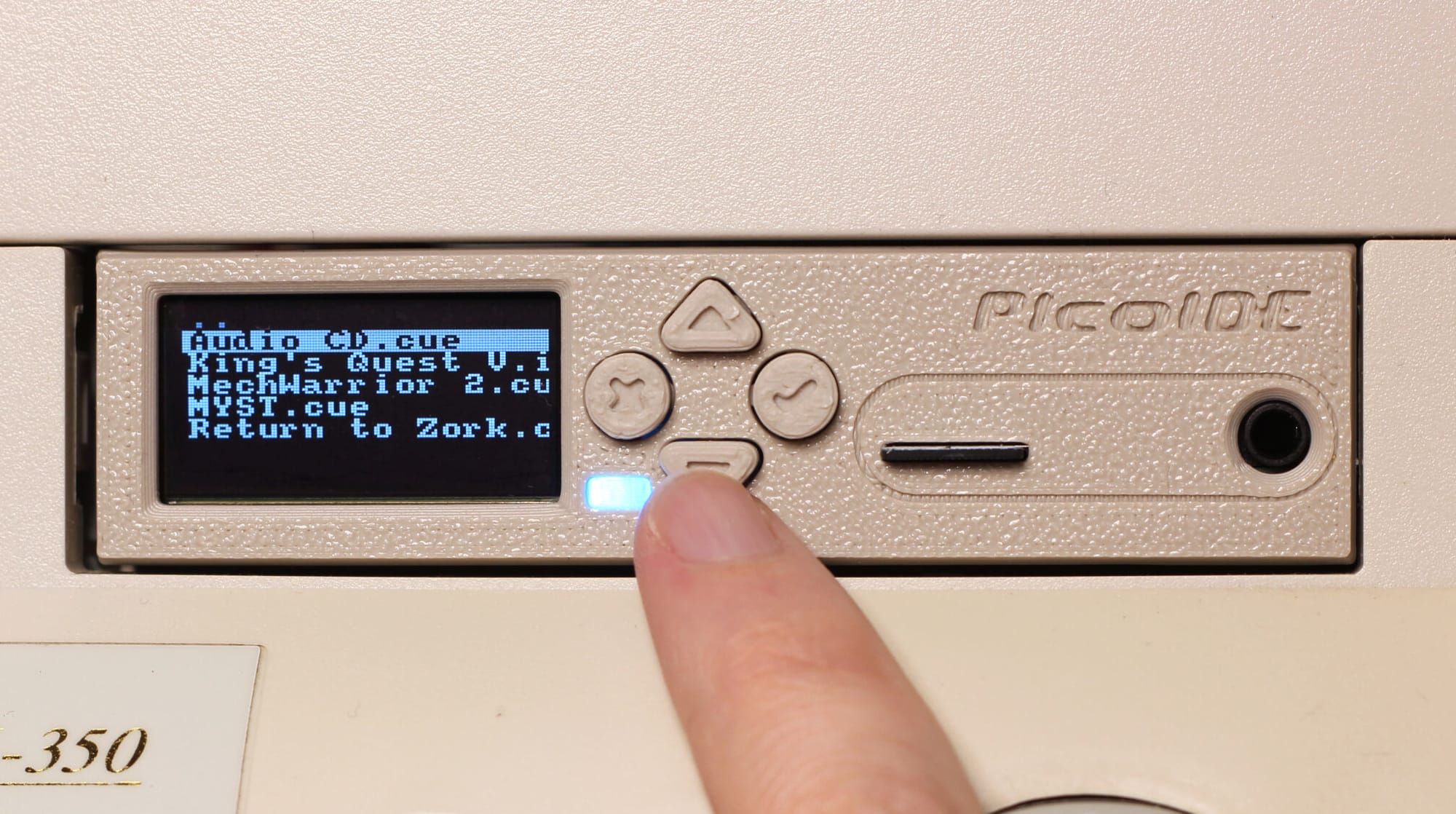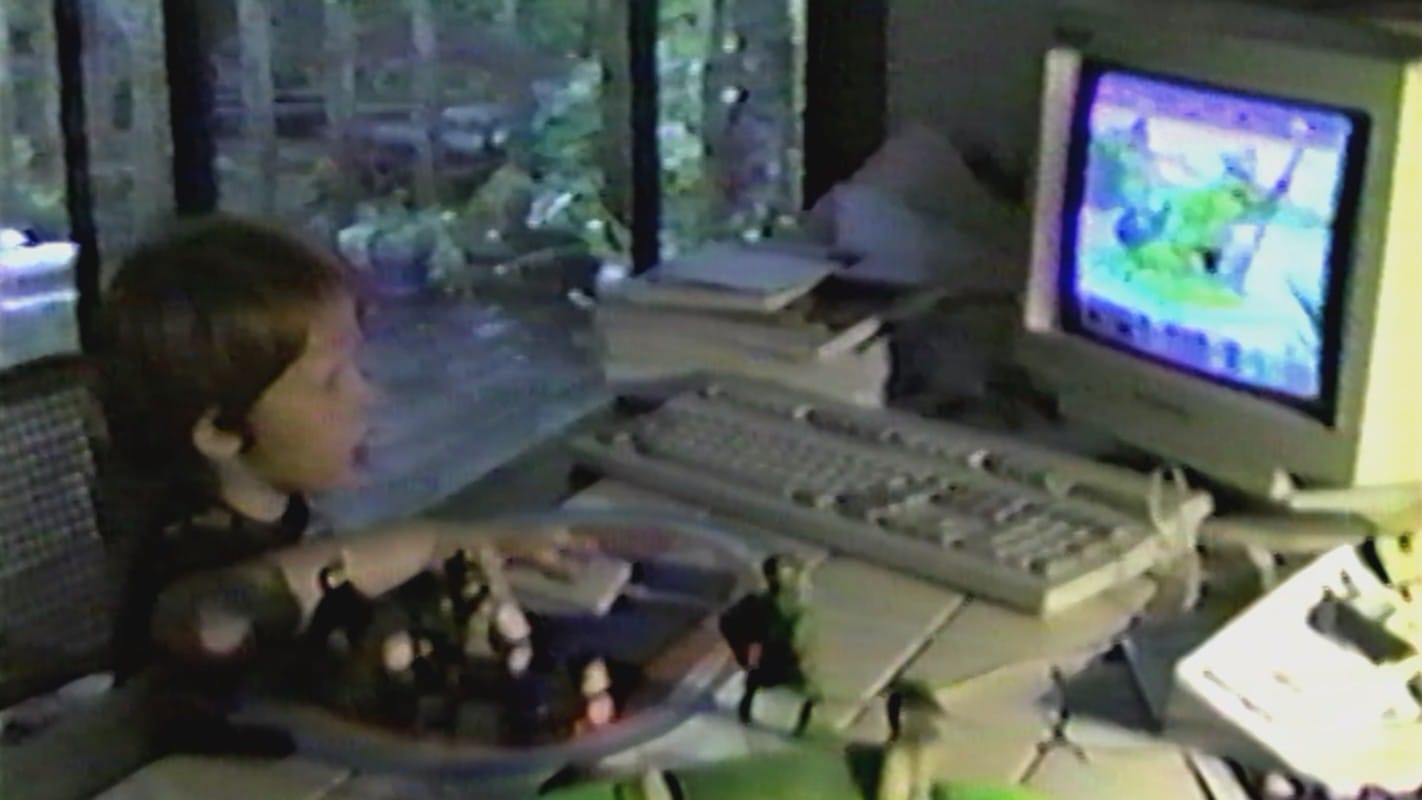The future of the past
How will the Analogue 3D, the new Steam Machine and Steam Frame, and the SuperStation One impact the hobby of emulation?

Here's a thought I'd like to put forward for your consideration: a few years ago, our greatest minds could at the peak of their powers only fathom of a Cool Pope who blasted cigs. Now I'm not saying they were wrong: a Pope who blasts cigs would be cool as hell. But they still wouldn't be as cool as a Pope who loves movies, will meet with trans activists, and thinks ICE sucks ass. I hope he gets to go to a White Sox World Series as Pope and throw out the first pitch.
I can't tell you why I felt compelled to start off this emulation newsletter about the Pope. Sometimes you're just thinking about the Pope blasting cigs and the rest just happens. I promise the remaining text of this newsletter is not about the Pope blasting cigs, though I can't promise that it's better for being about things other than the Pope blasting cigs.
(I've now had to correct the typo "Pople" three times because my fingers keep transplating the 'l' from 'blasting' into Pope. Writing's pretty hard sometimes.)
Or maybe it's not hard and I'm just filling space because this week's main topic is a bit more nebulous than usual. Instead of breaking news, we've got reflections on some upcoming hardware and What It Means for emulation in 2026. Elsewhere in the issue, I talk a bit more about an in-progress translation of Splatterworld, as briefly touched on last issue, and the return of PS2 emulation to Android.
It's been a bit quiet in emulation land this week, but there's always something going on. Case in point!

Here's a great read on the Dolphin blog about the Starlight Wii, a unique hospital-exclusive variant of the console. Nintendo has made special versions of its consoles for hospital residents for decades, but as you'd expect from a Dolphin blog write-up, this one digs into what makes the hardware different from the average retail Wii.
The story doesn't end with any new additions to the Dolphin emulator (at least not yet), but it's a really interesting dive into an obscure corner of Nintendo history nonetheless.

Meanwhile, here's some hell of niche but equally interesting hardware emulation: the PicoIDE, which can slot into old 3.5" drive bays to replace pre-SATA hard drives and disc drives. And it has built-in wifi "for remote control and upload/management of disk images." Sick.
While I do not personally have need to emulate old drives in a retro PC, I love any drive bay with a front panel unconditionally, so that's a big hell yeah to the PicoIDE on my part. Creator Ian Scott plans to make it available in the near future.
And now if we're all done blasting cigs, let's talk about some video games.
The Big Two
1. With the Analogue 3D and Steam Machine, the next steps for living room emulation are on the horizon

Two years and change from the announcement of the Analogue 3D, the FPGA Nintendo 64 is finally poised to arrive. Buyers have been getting their shipping notifications, so we should be seeing the real, honest-to-god hardware arriving in folks' hands real soon. Which means the deep dives are coming: into the 3D's FPGA hardware, its accuracy vs. the MiSTer's N64 core, and into how jailbreakable it is. I remain disappointed that after talking big game about OpenFPGA with the Analogue Pocket, the company dropped any interest in supporting the open source scene. That decision makes the upcoming SuperStation the much more appealing device to me, but the SuperStation is just a really snazzy implementation of the same FPGA used in the MiSTer, rather than more powerful.
I don't know if Analogue is scared of a Nintendo lawsuit or simply cannibalizing its own future sales, but the closed platform means that the 3D's Cyclone 10GX likely won't hold much interest for the open source community around the MiSTer. Nothing ever came of the MARS FPGA project. Perhaps we'll have to wait to see if Taki Udon decides to make his eventual "flagship" FPGA device based on a more powerful board than the trusty Cyclone V that's powered every MiSTer device so far. The MiSTer keeps getting better and better, but it feels like at some point in the next few years there's going to be hunger to advance to more powerful hardware.
It's wild how many products in the retro space have been announced and actually shipped during that two year span, including Taki's MiSTer Pi (and the SuperStation that's also nearly here) and approximately one million handhelds. Ya gotta wonder how much that year-plus delay ended up costing Analogue in tariff bullshit alone; the company's doing customers a solid by eating the difference, which must sting. But it sure feels like a missed opportunity to limit this thing to just N64 games when open source is just so vibrant right now.
In fact, some of the most interesting gaming hardware on the horizon was just announced at the same time Analogue 3D buyers were starting to get their shipping info: Valve's Steam Machine and Steam Frame. Neither would be possible without the open source efforts of the Linux community.
We wrote a ton about these at PC Gamer, with a deep dive into the living room Steam Machine AMD box and Arm-based VR Steam Frame. Neither device, of course, is specifically targeting emulation, and neither was the Steam Deck (though that didn't stop Valve from accidentally including a Nintendo emulator in one of its sizzle reels, then hastily editing it out). But will either of these be game changers for emulation?
No, but also yes.
The Steam Machine, which runs Valve's heavily customized and TV-friendly SteamOS, is essentially a more powerful version of the Steam Deck. It's not introducing, like, some new rendering alternative to DirectX or Vulkan that's going to be a technical game changer. What it can change is who is likely to have ready access to emulation and how they'll experience it. Thanks to the community work that's gone into EmuDeck, for example, it will be trivial to get a bunch of emulators up and running on the Steam Machine. In fact, if you already have a Steam Deck, you'll be able to seamlessly pop the microSD card into the Steam Machine and play everything you had on there on your TV on a much beefier mini PC.
The Steam Deck was not really intentionally going head-to-head with the Xbox or PlayStation, but the Steam Machine is. And it can play about 20,000 game from Steam itself or more or less any emulator, through an interface that's about as user friendly as the modern consoles. (It still skews towards the tech savvy, but it's also way less ad-infested, which is an element of user friendliness I happen to care about).
We'll see if the Steam Machine's CPU is powerful enough to run the likes of RPCS3 at full speed, and Valve won't be talking about pricing until next year. But on the day the Steam Machine arrives it's likely to be the de facto most convenient way to emulate games in the living room. That's not really a big deal for those of us who are already situated with beefy gaming laptops or desktops with HDMI cables snaking their way behind the TV stand or streaming setups beaming our 4K upscaled game libraries from a beefy gaming PC to the TV. But it might be a very big deal for someone who's annoyed as heck they can only pick from a paltry selection of PS2 "classics" on the PS5 and wanna play some Metal Arms: Glitch in the System for old times sake.
Meanwhile, as Retro Game Corps breaks down in this video, Valve's work to bring SteamOS to Arm will also have big ramifications for PC gaming on what are currently retro-focused Android handhelds.
Performance limitations are a key reason why the budget handhelds from Retroid and Ayaneo etc. are much better suited to playing SNES or PS1 games than your PC library. But just as Proton has brought Windows -> Linux gaming a long, long way from the early days of performance through Wine, FEX seems poised to do the same for Arm and will surely be significantly buoyed by Valve's interest.
It's early to speculate how it'll shake out running the current Linux versions of emulators on SteamOS on one of these Arm-based devices, but if the translation layer performance hit isn't too bad and if the graphics drivers don't cause all sorts of compatibility problems, well, performance-per-watt and battery life could both come out very favorably compared to a system like the Steam Deck. We're gonna have a lot to talk about next year.
2. Shout out to Retrotink for my VHS memories

Normally I keep the newsletter pretty focused on software & hardware emulation without venturing into the wider world of retro hardware, because a bit of focus is nice — there are already so many websites and YouTube channels devoted to flash carts and RGB mods and alllll that other stuff. But this week I've got to show some love for Retrotink creator Mike Chi, whose 5X scaler box is one of the best devices I've ever owned and has now enabled me to preserve something far more precious than gaming on my old consoles.
That's right, it's ~ hoooome moooovies! ~
For the last week I've been digitizing a hoard of VHS family videos I collected on my last visit home. I knew those tapes were only going to survive for so long, and I also know that the people in my family who'd really like to be able to watch them again aren't likely going to go through the effort of watching a tape these days. But once ripped I can make them easy to watch and, of course, preseve them for the future.
- There's quite a range of effort one can go to to preserve analog video at the highest possible quality; in fact, just a few days ago the Video Game History Foundation was posting about its setup, which reads the signal from the tape before it's even output by the VCR.
Thanks to a local volunteer, our Domesday VHS capture setup is working again! This still-experimental hardware mod lets us read from VHS tapes at the highest possible quality, directly from the internals of the VCR Currently digitizing this goofy Xbox Live infomercial...
— Video Game History Foundation (@gamehistoryorg.bsky.social) 2025-11-13T21:43:37.779Z
The Domesday project is amazing. It's also hella complicated, fickle, and the specialized gear and software involved is still evolving. I looked deep into my heart and decided that the benefits of the process were not that important to me, when all I really want is to get rid of this stack of old tapes that house footage of me as a baby shot on a late '80s camcorder. There's only so much lipstick you can put on a pig, right?
(To be clear, I'm not the pig. The VHS tape is the pig.)
So I "settled" for a humble borrowed VCR (thanks Steve!), my Retrotink 5X, and an Elgato HD60, which as it turns out isn't really that humble a setup after all. At least not compared to what digitizing tapes would've been like even a few years ago. Since its original launch, the 5X got a host of firmware updates that added multiple VHS-friendly features, like motion adaptive deinterlacing and time-based correction; things that would've required dedicated (and expensive) hardware to add to the digitization process before 2023.
I followed the great instructions and advice from Retro RGB in this video, and the results aren't exactly beautiful given the source material, but I'm pretty sure they're a whole lot less messy than they would be without the Tink's help.
Even the Tink's basic features allowing for trimming the noise from the sides of the picture are welcome, and I've been tweaking the framing for each tape. I think I'll still end up doing a bit of video editing on them to fine-tune the crop and maybe run a very light denoising, but y'know, good enough is good enough.
When I first got an XRGB Framemeister over a decade ago, I thought it was so cool that game fans cared enough about image quality and latency to find a device that could be bent to their needs. Since then, folks like Mike Chi have come along and made that hardware far better and more specialized than anyone could dream of back in the early 2010s. Now they've widened the remit to support all sorts of analog hobbyists who were similarly limited to high end, $pecialized gear.
I wish I had a fancier Retrotink 4K which is truly packed with FPGA wizardry, but the 5X is a vastly better device than it was when I first bought it — and I was already happy with it then! When the old consoles (or, apparently, tapes) come out, it's got the juice.

Patching In

Dolphin goes dark, light, and in between – After quite a bit of discussion between Dolphin's contributors, the emulator now has new dark, light, and gray color schemes available on multiple OSes. They're pretty subtle themes, but it's nice to have options, right?
Damn, Citron got arms – The latest release of Yuzu successor Citron racks up some impressive Ws: native Windows ARM64 support, a new cheat UI, performance improvements specifically for the Snapdragon 8 GPU, and support for the latest Switch 21.0.0 firmware. Very good stuff!
PPSSPP's Dual senses get tilted – Do you have a real physical DualSense controller? Do you have a fake virtual PSP? Congratulations! They're now friends. PPSPP's added support for tilting via the accelerometer in the DualSense. Locoroco lovers rejoice.
PCSX2 + Android = ARMSX2 – It's been about three years since the developer of Android PS2 emulator AetherSX2 shut down the project, and there's pretty much been a void of quality PS2 emulation on the mobile platform since. ARMSX2 aims to change that, with a new mobile fork of PCSX2. That means the bones are good, and unlike AetherSX2 it's an open source project; it's also currently using a recompiler to translate x86 instructions to arm64, so it's a long way from the ideal efficiency of native performance. But you gotta start somewhere, and an earnest effort to bring a free implementation of PCSX2 to mobile seems like a good place to kick off to me.
Core Report

First you Surprise Attack, then you Run & Gun – Jotego, Jotego, he's our man. If he can't dunk it, no one can! ✺◟(^∇^)◞✺ Ahem – FPGA developer Jotego has promoted his core of Konami run and gun game Surprise Attack to public, meaning you can get it now for the MiSTer or Analogue Pocket without being a Patreon backer. Meanwhile, Run & Gun — which is a Konami basketball game, not a run and gun game — is available in beta. The work on Jotego's favorite basketball game has been "plagued with difficulties," but he's pushed through.
Finally, Run and Gun betahttps://t.co/hdSE1LlTP2 pic.twitter.com/pTx905HBlC
— jotego (@topapate) November 7, 2025
Translation Station

Aeon Genesis is on Splatterworld – As touched on briefly last issue, the never-released Splatterhouse spin-off Splatterworld leaked online, and romhacker Gideon Zhi has wasted no time slicing into its guts. "I'm here to formally announce its presence as an active project, and to report that the technical work is as of now mostly complete. What remains is text translation (which itself is moving right along) and polish, plus a few extra quality-of-life features like ROM expansion," he writes. Here are some before/after pics of the ongoing hacking process, which has involved totally reworking some of the menus to fit more English text.




Super Ninja Kid goes officially unofficial – This isn't new, but I thought it was noteworthy. SNES Sidescroller Super Ninja Kid got an unofficial fan translation back in 2023, the same year it also got an official re-release in the Ninja JajaMaru retro collection. Now Pennywise, the translator who worked on that official version, owns the rights to the work and has decided to release the patch for free. That's pretty cool! The same goes with this updated version of the translation for another game in the collection, Ninja Jajamaru: Prophecy of the Demon - The Demonic Castle.
Gals be gunslingin' – This is a tease rather than an actual update, but anytime Hilltop posts, I pay attention! Reminder that their first official translation project, Milano's Odd Job Collection, is coming out in just under a month!
We've been quiet recently but I'm hoping to post footage of the English patch for these games this month.
— Hilltop (@hilltopworks.bsky.social) 2025-11-14T06:22:00.004Z
Good pixels


What if the pople... 💽





